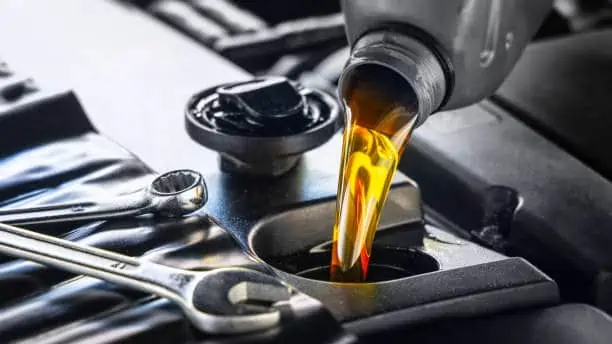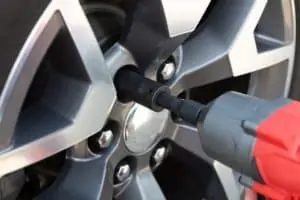OE Oil programs are the gateway to dealer parts and service success but are offered, throughout the channel, as a formality rather than a strategic keystone.
Capitalizing on Factory Services
Dealers can overcome many of their challenges with one simple change: increased focus on factory services.
Factory services are strategic because they:
- Occur at defined intervals
- Provide opportunities to cultivate customer relationships
- Allow for ongoing vehicle inspections
- Generate service and parts dollars
- Lead to ancillary opportunities
Dealers that fail to fully engage in factory service work are sending their customers away.
Oil Changes Drive Factory Services
Oil changes are the most frequently performed service.
While most automakers have implemented a 10K mile drain interval, oil remains the key product around which general services are built. Most customers could not be bothered to have their tires rotated or fluids checked. But they are interested in having their oil changed.
Intuitively, customers have absorbed the messaging around oil and oil changes. They understand that oil changes preserve their vehicles and lower the risk of high-dollar repairs; they also believe that “oil” is “oil”, that despite rare exceptions, engine oil quality and functionality are constant across brands. So while most customers will not adhere to a brand preference, they will schedule oil changes at defined intervals.
And this is where the value of oil and factory services intersect. Most customers who frequent a shop for an oil change will not object to the discharge of a complete service. This allows the shop to inspect and replace needed parts, top off fluids, and identify and communicate future needs.
This makes oil the gateway product that leads to:
- Customer relations
- Customer satisfaction
- Dealer retention
- Dealer parts and service sales
Dealer Oil Change Services Miss the Mark
Customers may not worry much about oil brands, but they do care about the time needed to get an oil change. Indeed, when it comes to oil changes, there is a clear and well-documented indirect correlation between time and customer satisfaction: the less time spent waiting, the greater the satisfaction.
In the aftermarket, oil change wait times average from 20 – 40 minutes; dealerships can keep a customer waiting anywhere from 1 to 2 hours. Obviously, this is a significant disadvantage for dealerships, one that should be the central focus of OE oil programs.
But nothing is further from the truth. OE oil programs offer two basic features:
- Competitively-priced product
- Product delivery
While these features are structurally essential to any program, they are wholly inadequate for this one.
OE Oil Programs
Product and Distribution Focus
Both automakers and dealers have a long, tortured history with oil. From an automaker perspective:
- Oil is made available because it has to be made available
- Sales volume is a function of dealer participation
- Pricing and delivery are key to dealer participation
From a dealer perspective:
- Oil is purchased because it has to be made available
- Oil is a cost of doing business
- Pricing is key to keeping operational cost down while maximizing margins
The common denominator in these perspectives is “pricing”, especially from a dealer purchasing perspective.
Pricing is a challenge for automakers, who:
- Set national, rather than local pricing
- Cannot assess local competitive advantage because it’s based on a feature that is always changing
Pricing is a challenge for dealers because it focuses them in wrong direction. It focuses them on purchasing, not selling.
Absence of Operational Support
So, what’s missing in OE oil programs is operational support needed to:
- Improve service time
- Increase the number of oil changes per day
- Generate year-over-year same store sales growth
These important KPIs are not even considered when evaluating or making purchasing decisions related to OE oil programs. Neither automakers nor dealers look to their oil program administrators for operational support; instead, automakers farm this work out to 3rd parties at considerable cost, and individual dealers decide for themselves how or if they want to use this resource.
This disconnect, between what is needed in an OE oil program and what is provided, explains the ongoing problem with OE oil programs and offers insight into how to fix it.
Restructuring OE Oil Programs for Success
Applying Channel Balancing to OE Oil Programs
3ng Consulting believes that oil program success comes when all channel partners:
- Have the same objectives
- Are incentivized to achieve these objectives
- Establish clear KPIs for measuring success and identifying areas for improvement
Oil suppliers should therefore have, or be able to obtain, the core competencies needed to help dealers and automakers be successful in the oil change business. It is not enough to deliver a product for a price, especially for a product that is so critical to dealer parts and service success. If it were enough, dealers would have little need to purchase oil outside their OE programs and customers would be more inclined to use dealership oil change services.
Automakers make a mistake when they outsource critical program features to 3rd parties because they:
- Spend more than they need to
- Do not achieve the results they desire
- Remove powerful support incentives from their suppliers
- Create an imbalance in their channel
- Most have suppliers that are unable to provide the support needed
- Changing suppliers is a lot of work
- A supplier change in 2010 caused numerous dealer defections
3ng Consulting
3ng Consulting understands the dilemma automakers and dealers face. We appreciate the complexities and risks associated with program restructures. But we also know how to offset these complexities, lower the risks, and increase the benefits that can be realized. We understand that any restructure worth considering has to come with the promise of increased:
- Participation
- Sales
- Profit
- Efficiencies
- Customer Satisfaction
Let us show you how we can help.






